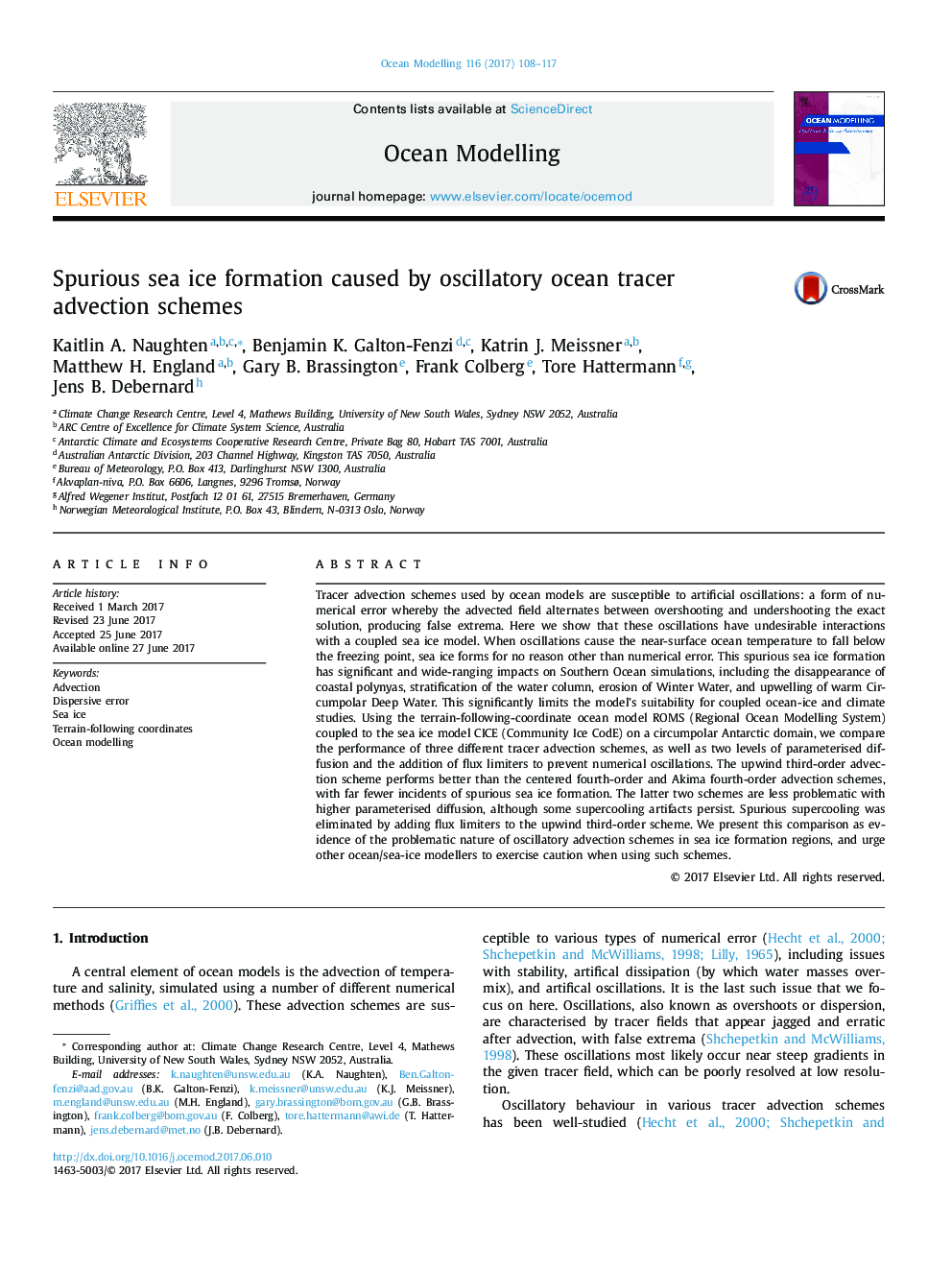| کد مقاله | کد نشریه | سال انتشار | مقاله انگلیسی | نسخه تمام متن |
|---|---|---|---|---|
| 5766452 | 1627733 | 2017 | 10 صفحه PDF | دانلود رایگان |
- Numerical oscillations in ocean tracer advection schemes cause spurious supercooling.
- In a coupled ocean/sea-ice model, this leads to excessive sea ice formation.
- Significant impacts for coastal polynyas and water mass properties are identified.
- This problem is sensitive to the choice of advection scheme and explicit diffusion.
- Flux limiters are applied to the upwind third-order scheme to prevent oscillations.
Tracer advection schemes used by ocean models are susceptible to artificial oscillations: a form of numerical error whereby the advected field alternates between overshooting and undershooting the exact solution, producing false extrema. Here we show that these oscillations have undesirable interactions with a coupled sea ice model. When oscillations cause the near-surface ocean temperature to fall below the freezing point, sea ice forms for no reason other than numerical error. This spurious sea ice formation has significant and wide-ranging impacts on Southern Ocean simulations, including the disappearance of coastal polynyas, stratification of the water column, erosion of Winter Water, and upwelling of warm Circumpolar Deep Water. This significantly limits the model's suitability for coupled ocean-ice and climate studies. Using the terrain-following-coordinate ocean model ROMS (Regional Ocean Modelling System) coupled to the sea ice model CICE (Community Ice CodE) on a circumpolar Antarctic domain, we compare the performance of three different tracer advection schemes, as well as two levels of parameterised diffusion and the addition of flux limiters to prevent numerical oscillations. The upwind third-order advection scheme performs better than the centered fourth-order and Akima fourth-order advection schemes, with far fewer incidents of spurious sea ice formation. The latter two schemes are less problematic with higher parameterised diffusion, although some supercooling artifacts persist. Spurious supercooling was eliminated by adding flux limiters to the upwind third-order scheme. We present this comparison as evidence of the problematic nature of oscillatory advection schemes in sea ice formation regions, and urge other ocean/sea-ice modellers to exercise caution when using such schemes.
Journal: Ocean Modelling - Volume 116, August 2017, Pages 108-117
